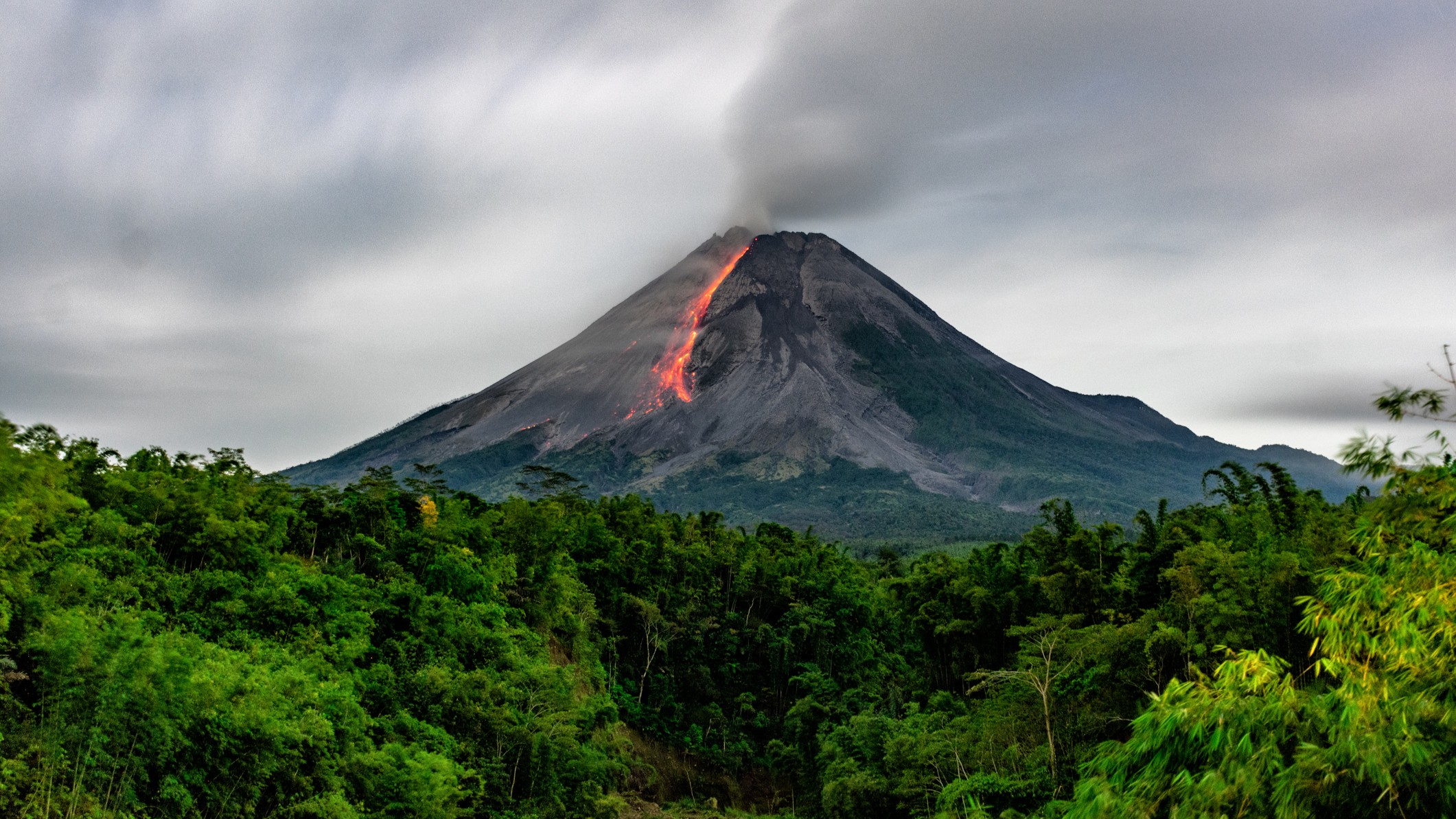- Get link
- X
- Other Apps
- Get link
- X
- Other Apps

Volcanoes and Verdant Canopies: A Surprising Connection Spotted from Space
For years, scientists have been meticulously monitoring volcanoes for tell-tale signs of an impending eruption. From seismic tremors to ground deformation, these indicators offer crucial insights. But now, a groundbreaking discovery is adding a new dimension to volcanic forecasting: the vibrancy of surrounding vegetation.
A recent collaboration between NASA and the Smithsonian Institution has unveiled that the lushness of trees near a volcano can serve as an early warning signal, detectable even from space. This innovative approach could revolutionize our ability to predict eruptions and protect vulnerable communities.
The Greener, the Closer?
The logic behind this surprising connection lies in carbon dioxide (CO2) emissions. While sulfur dioxide emissions have long been monitored as a precursor to eruptions, CO2 emissions often occur even earlier. However, detecting these subtle CO2 increases has been challenging, as explained by Robert Bogue, a doctoral student in volcanology at McGill University: "A volcano emitting the modest amounts of carbon dioxide that might presage an eruption isn't going to show up in satellite imagery."
This is where the trees come in. As CO2 wafts from a volcano preparing to erupt, it acts as a fertilizer, boosting the health and vibrancy of nearby vegetation. This enhanced "greenness" becomes a measurable indicator of underlying volcanic activity.
Key Benefits of this New Approach:
- Early Warning: Detects subtle changes that precede other indicators like sulfur dioxide emissions.
- Remote Monitoring: Eliminates the need for on-site measurements in dangerous and inaccessible locations.
- Cost-Effective: Utilizes existing satellite technology for efficient data collection.
Evidence from Mount Etna
A 2024 study published in Remote Sensing of Environment provided compelling evidence for this phenomenon. Researchers analyzed satellite imagery of Mount Etna in Italy between 2011 and 2018. The results revealed 16 distinct spikes in both CO2 levels and vegetation greenness, all coinciding with upward movements of magma within the volcano.
Nicole Guinn, a doctoral student in volcanology at the University of Houston and lead author of the study, emphasized the accessibility of this method: "There are plenty of satellites we can use to do this kind of analysis."
Limitations and Future Directions
While promising, this technique is not without its limitations. As Florian Schwandner, a volcanologist and chief of the Earth Science Division at NASA's Ames Research Center, points out, the presence and health of surrounding vegetation are crucial factors: "Tracking the effects of volcanic carbon dioxide on trees will not be a silver bullet." Volcanoes in barren landscapes or forests affected by fires or disease may not yield accurate results. Furthermore, atypical weather conditions can impact the readings.
To refine and validate this approach, NASA, the Smithsonian Institution, and other organizations have launched the Airborne Validation Unified Experiment: Land to Ocean (AVUELO). This project aims to compare satellite imagery with ground-based observations to ensure data accuracy and calibrate space-borne instruments for future research.
A Promising Step Forward
The ability to monitor volcanic activity through the greenness of surrounding trees offers a significant advancement in early warning systems. While challenges remain, this innovative approach holds immense potential for improving eruption forecasting and safeguarding communities at risk. By harnessing the power of satellite technology and understanding the intricate relationship between volcanoes and their environment, we can strive for a future where volcanic eruptions are anticipated and managed with greater precision.
Source: https://www.livescience.com/planet-earth/volcanos/the-closer-a-volcano-is-to-erupting-the-greener-the-trees-around-it-look-from-space
early warning
greenness
NASA
natural disaster
remote sensing
satellite detection
Smithsonian
trees
volcano eruption
volcanology
- Get link
- X
- Other Apps
Comments
Post a Comment